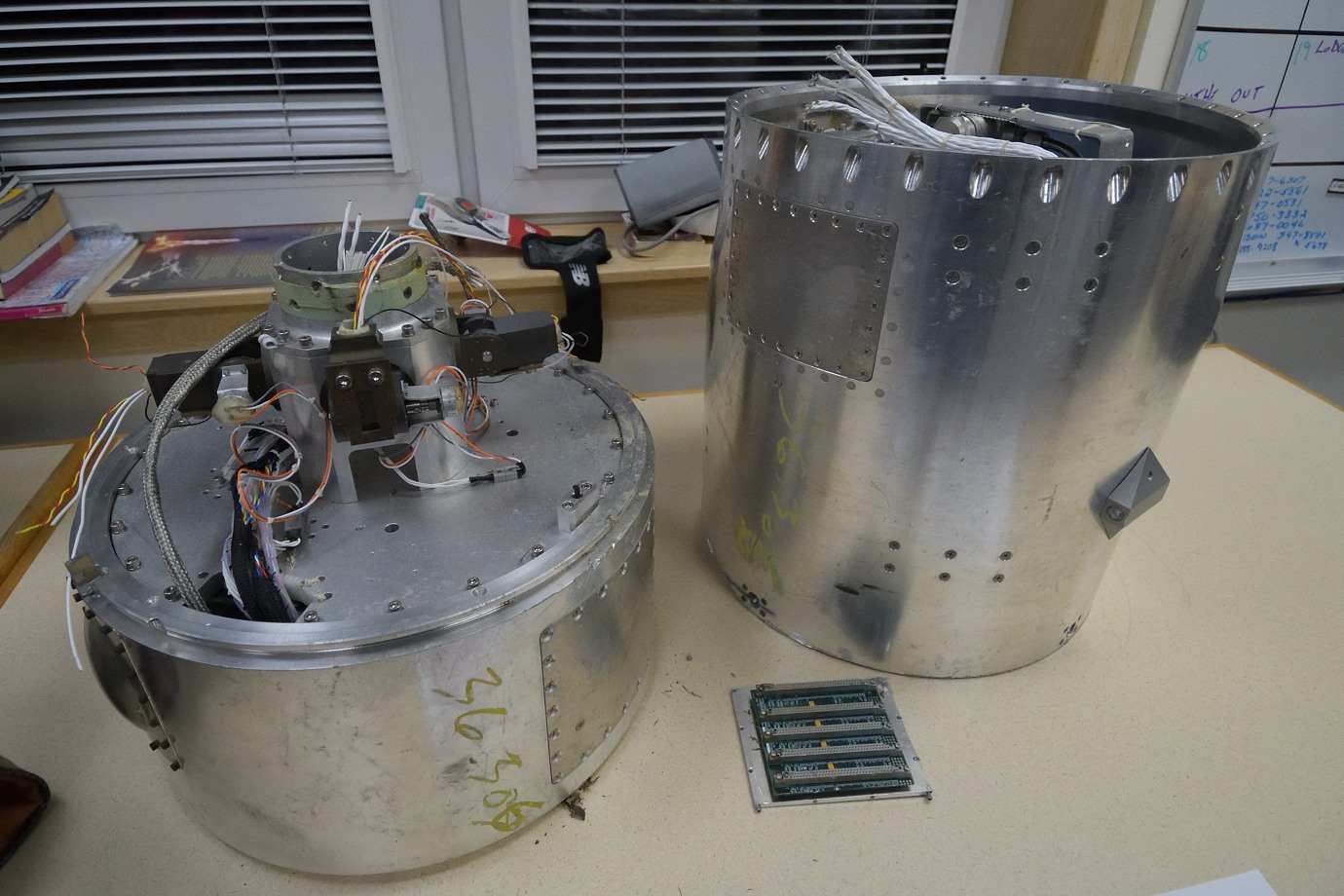That is Science
with rockets. Poker Flat Research Range north of Fairbanks is one of 3 facilities on the northern hemisphere capable of sending up sounding (measurement) rockets used to study aurora and the upper atmosphere. The two other facilities are located at Andøya in Northern Norway and in the Ny Ålesund research community in Svalbard. Poker Flat Research Range recently celebrated its 50 year anniversary and offered a unique opportunity to visit the upper research facilities located 5 miles at the top of a hill from the rocket shooting range - they are off limits on regular tours in summer. A lot of other people (more than expected) thought it was a great opportunity, and the organizers had to scramble to provide enough shuttles. The line was very long, but temperatures were slightly above freezing so the wait was fairly comfortable. I used the opportunity to test my new D500 at ISO 25600. High ISO noise reduction was set to low, but even that setting still kicks in pretty hard in CNX-D at this high ISO. Otherwise I mostly used ISO 6400 for the other handheld shots.
#1
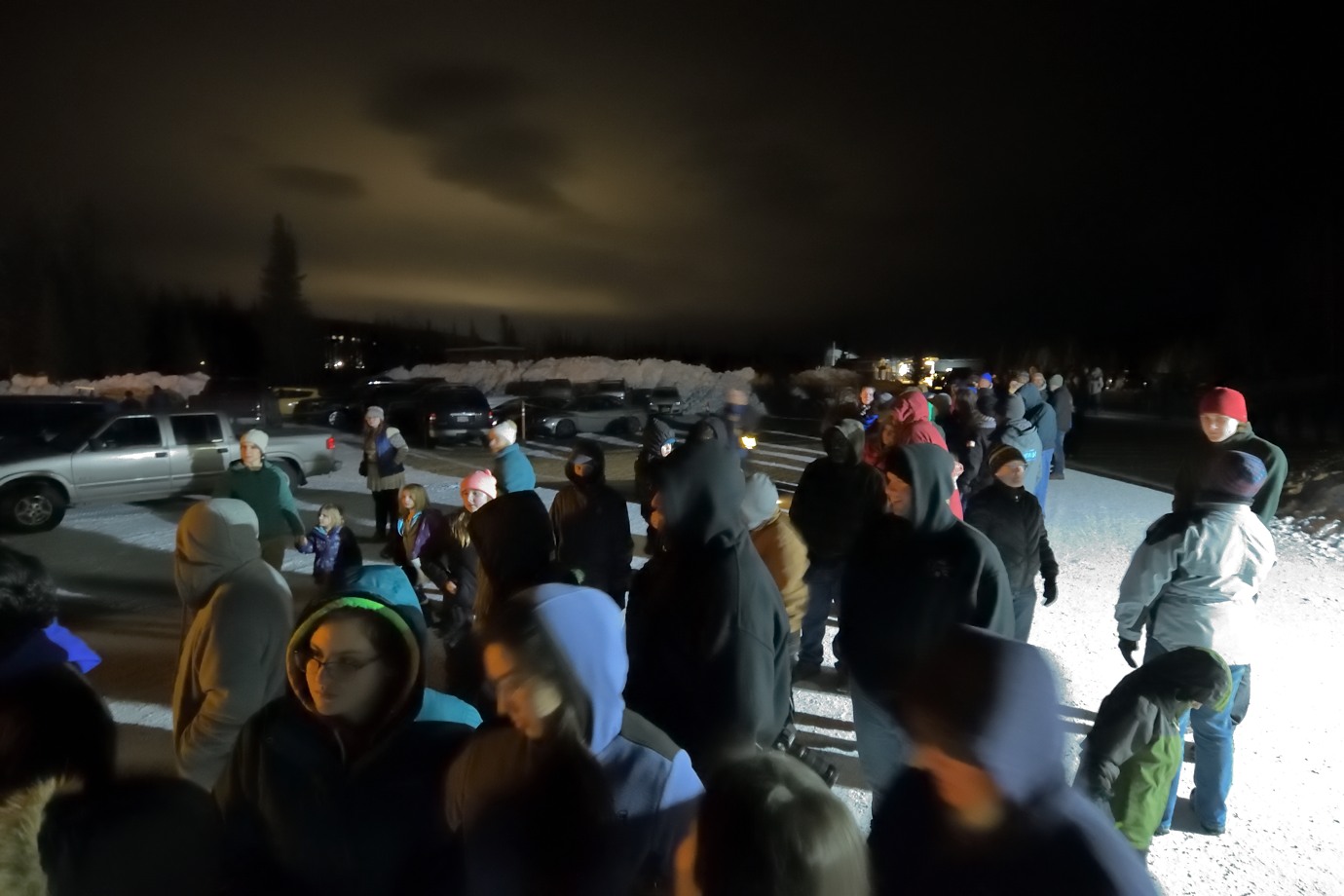
During the wait there was also entertainment with demonstration of weather balloon launch. In the foreground is the cradle for a sounding rocket.
#2
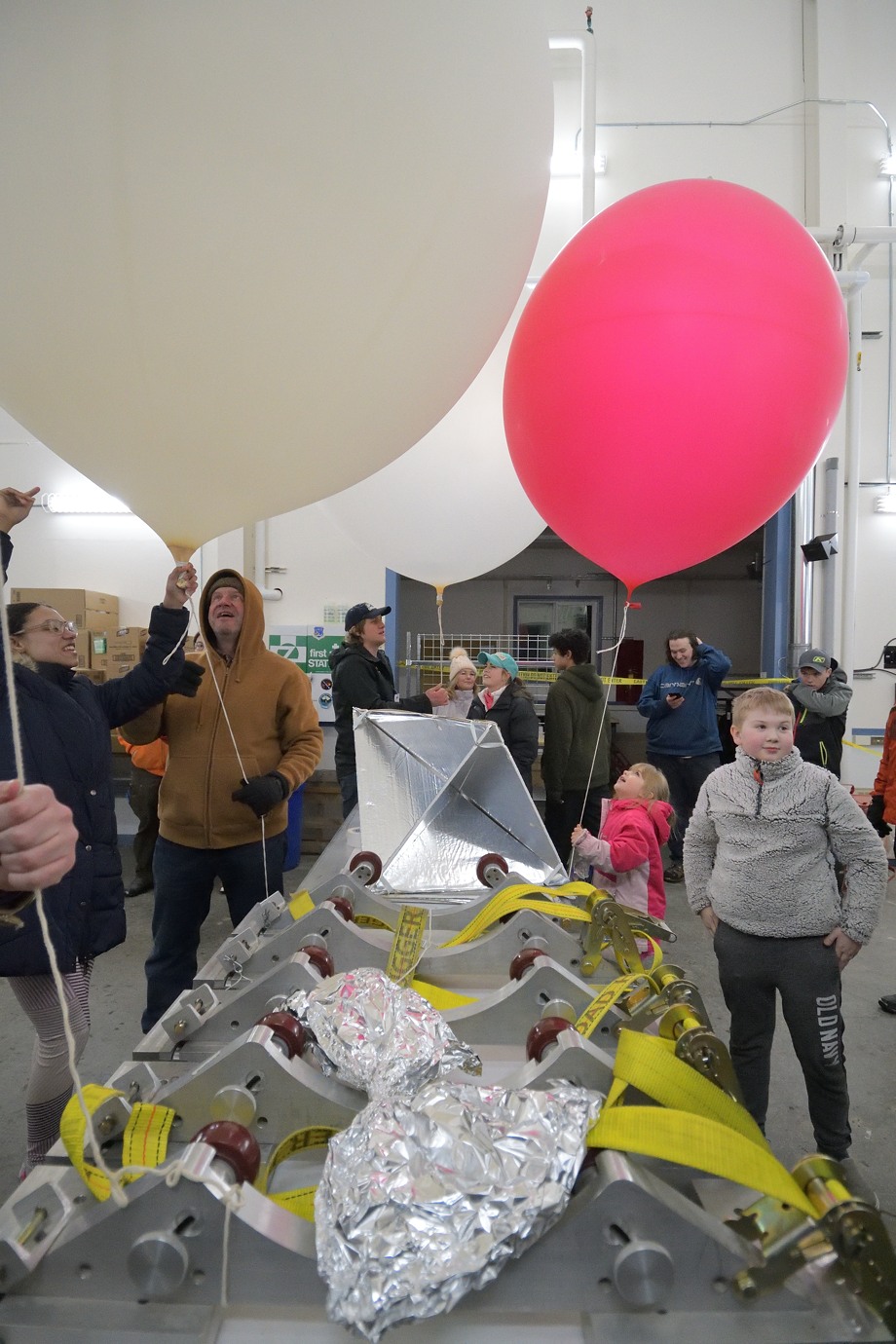
All sky cameras have for a long time been important instruments in the aurora research. In the foreground is shown an ancient film based model based on mirrors. The modified film camera was used for time lapse photography in the box below. In the background is the Nikon 8 mm lens used these days mounted on a Sony body. Also there is a CMOS camera on the bench, and a smaller fisheye lens that was not mounted. Of course I found it proper to capture my image with the Nikon 10.5mm fisheye.

#3
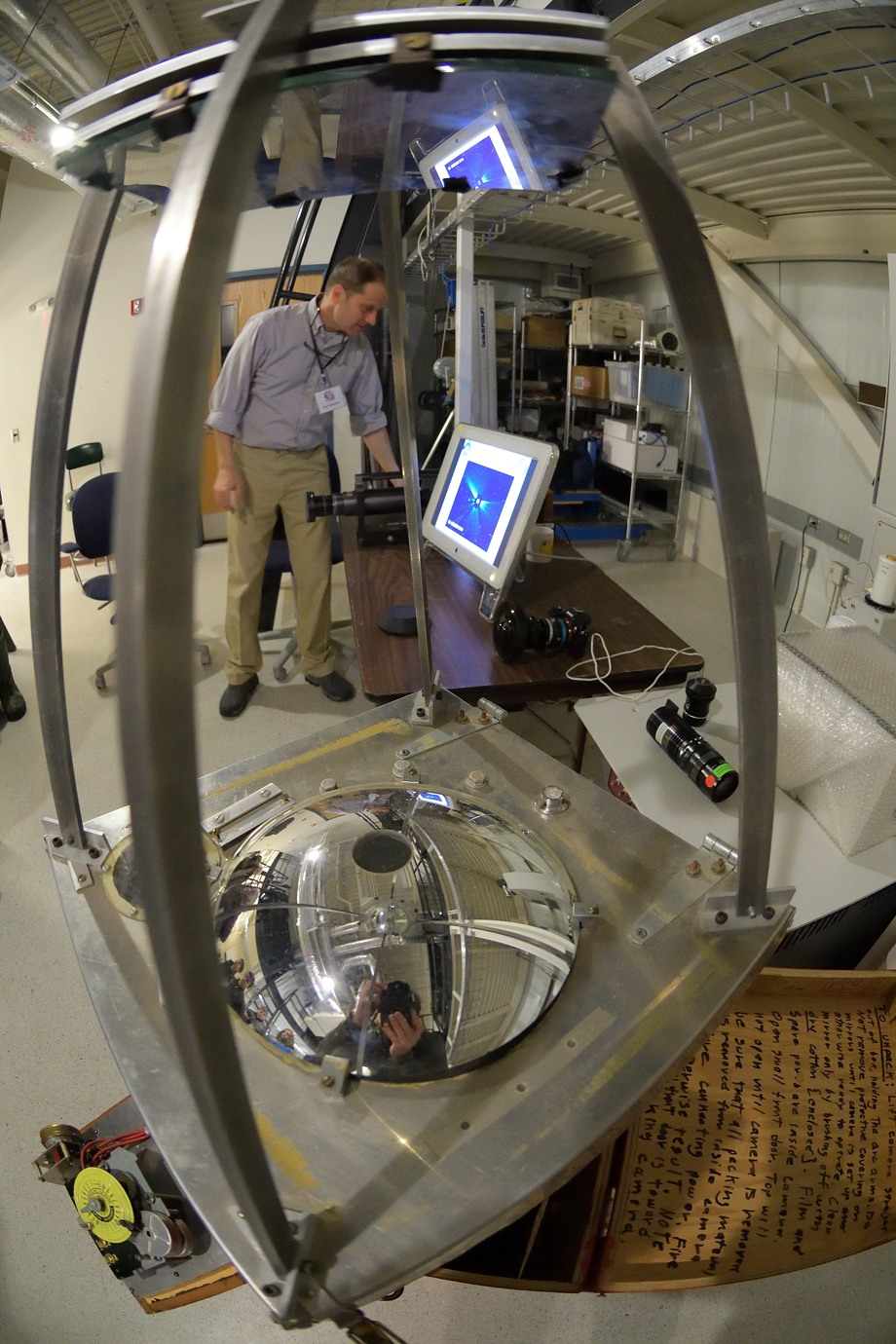
Due to the long wait it was only time to visit one of the other two facilities on top of the hill. I went for the LIDAR facility. This powerful pulsed laser beam is used to measure the composition of the atmosphere in a fashion similar to how a sonar is used underwater. The powerful laser cannon is located in the basement and the beam directed up to the dome though a system of optical benches and mirrors.
#4

Smoke was used to visualize the beam.
#5
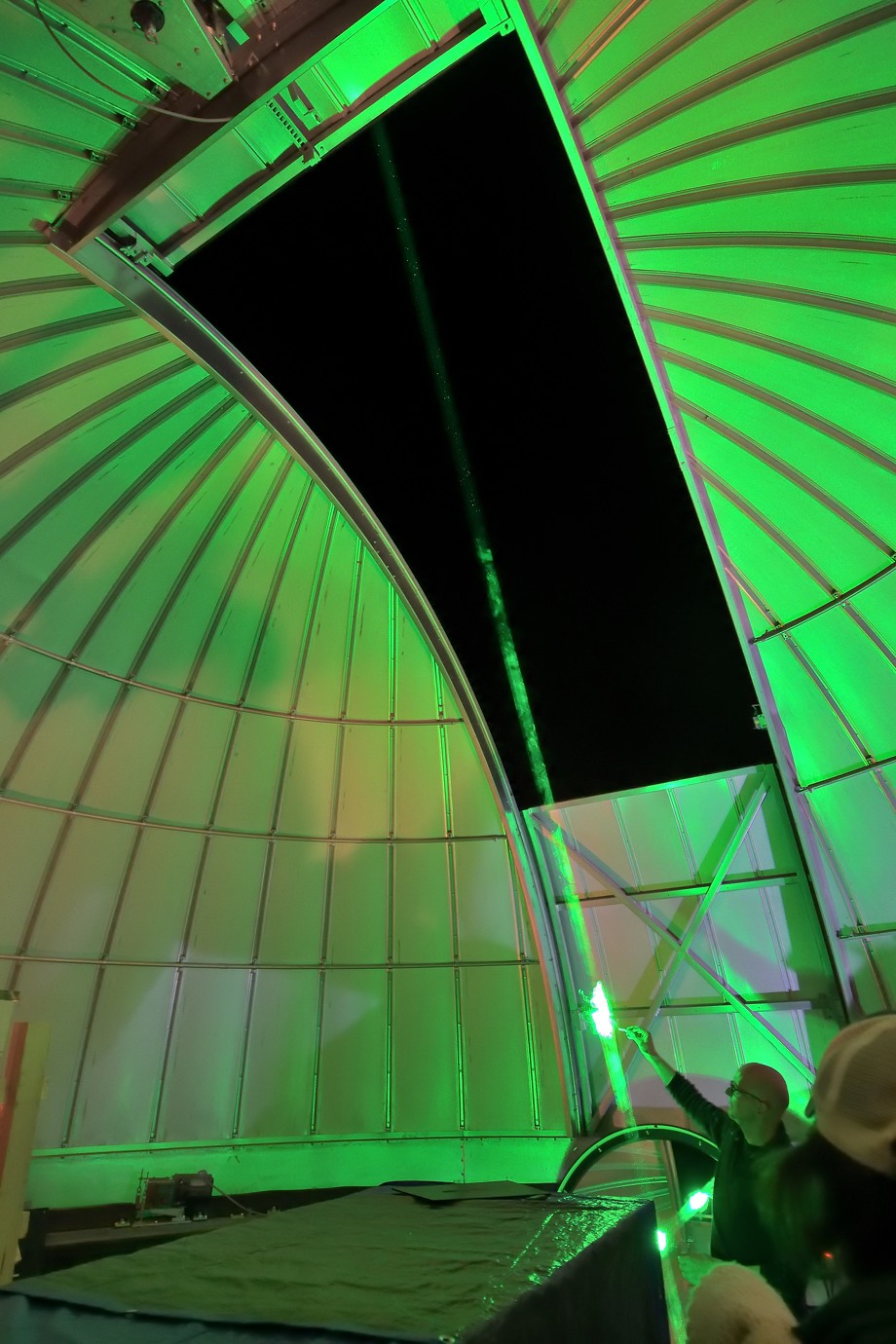
Btw. next day I read on the front page of DPR how lasers used to remove tattoos had damaged a camera sensor just by the reflections from tissue - GULP. My D500 sensor still seems intact though.
Powerful beam in the sky. We were allowed to operate the beam on the computer - pretty cool.
#6
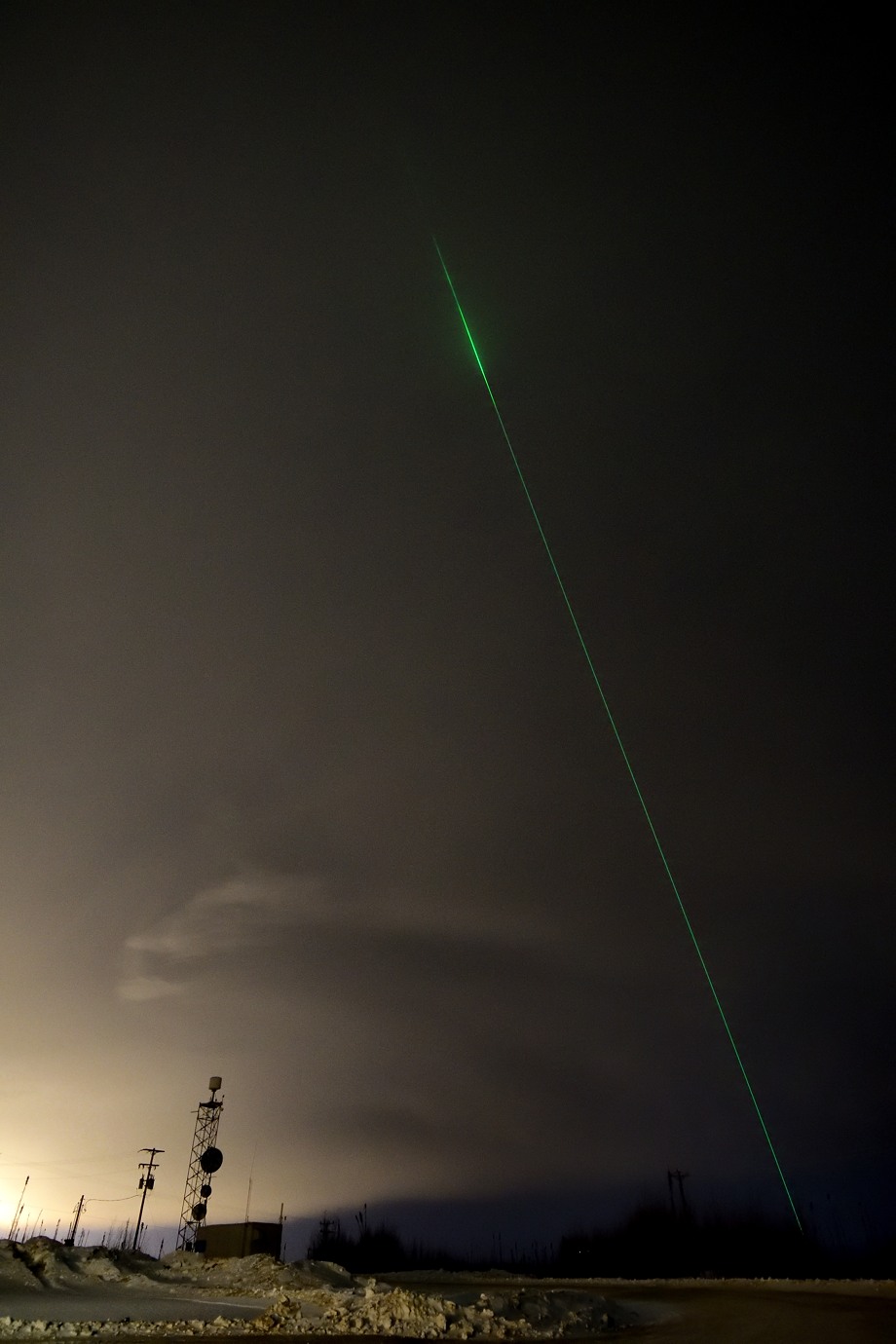
Some of the antennas used to download real time telemetry from the rockets and also radars used for the sky is also shown, but I did not make it to that facility.
Down at the launch pads, the
Block House is where all the information from the instruments are applied to evaluate how favorable the night sky conditions are for an experiment, and control the sounding rocket launch. It is a crappy image, but i thought the other name of the building would be appreciated by someone here.

#7

Here are the panels used to control the individual rockets. The camera to the left is pointing to one of the key switches used to manually control the launch. The countdown can be interrupted down to the very last second. It was said that making the decision and controlling that switch was likely the most stressful task a scientist could do. Most of us used to photograph the aurora know how unpredictable it can be, and the person in charge of this switch has to make an informed decision trying to predict how good the aurora will be 20 minutes in advance (that is how long the rocket takes to reach measurement altitude). A rocket launch itself costs about $1 million, but the payload carried on the rocket costs much much more and cannot be reused without a complete rebuild.
#8

The panels look surprisingly traditional with respect to the level of technology, however here it is the true and tested technology that counts, not the latest and less tested one.
On to the launch pad itself, we were informed that we were not allowed to photograph the launch ramp according to US federal regulations, however we were encouraged to photograph the sounding rocket by framing low, so that we did not include the launch ramp above in the image. It was said that there is no such thing as a standardized rocket in use. Just about every one is different dependent on the actual experiment of each study.
#9
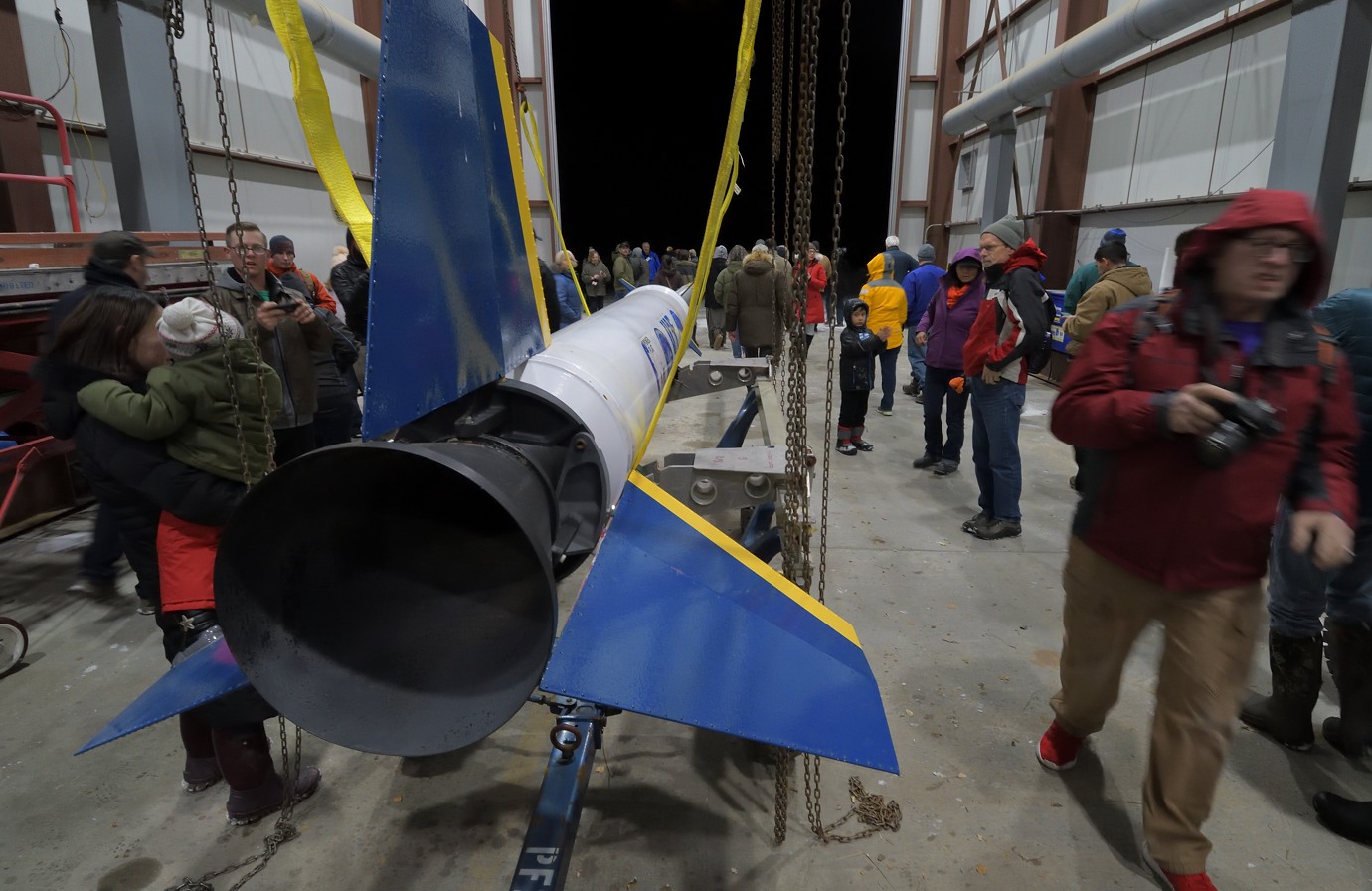
#10
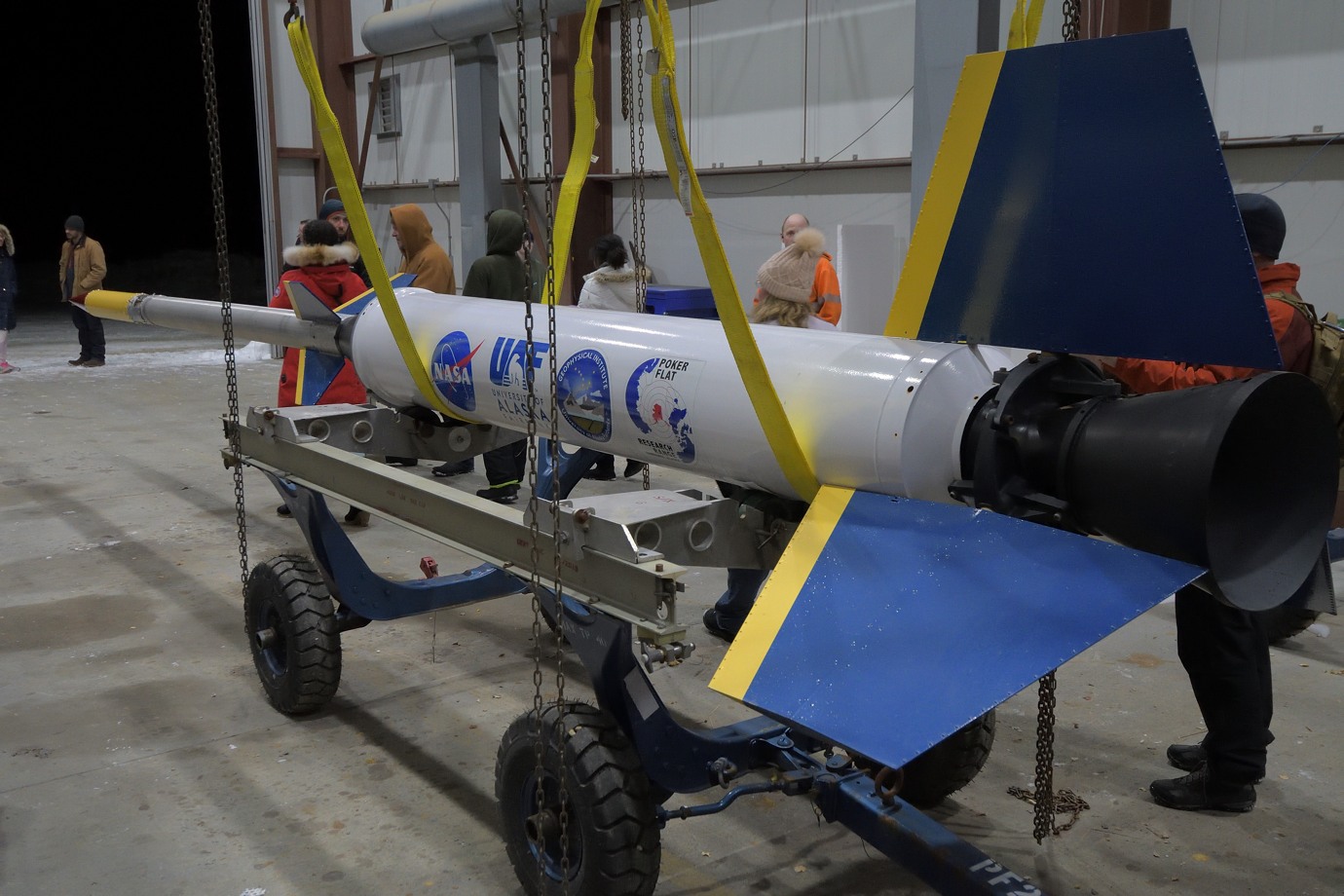
A closer look at the tip where the payload is located.
#11

Finally a look at a couple of payloads that were recovered after a launch.
#12
